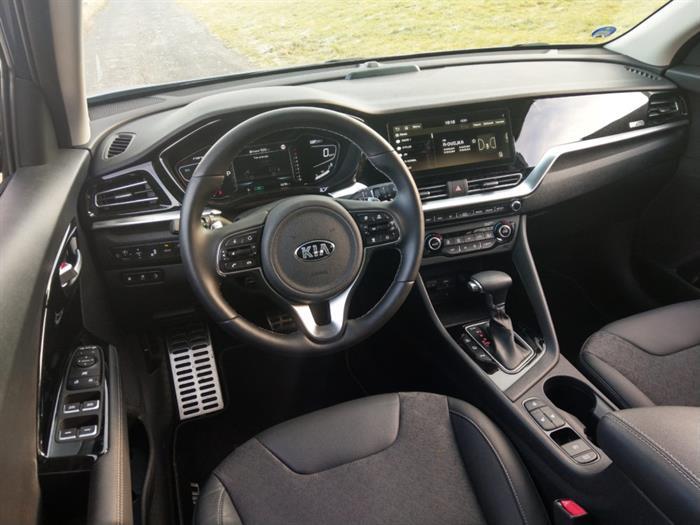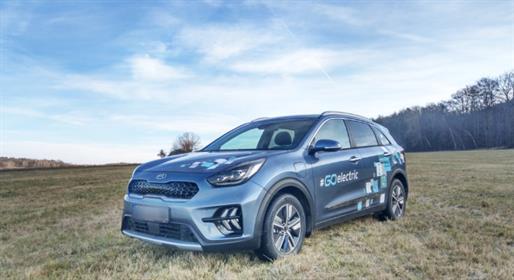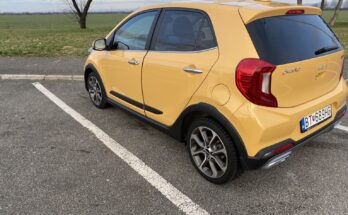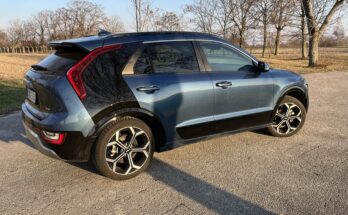Last year's Geneva Motor Show brought us, in addition to many novelties, the modernization of the Niro model. Together with the Stonic and Soul models, the Niro is a representative of Kia's urban crossover segment. We have currently put it to our editorial test in a plug-in hybrid version.
I personally tested this car two years ago. So where did this car go as part of the modernization? I will try to answer that in the following lines.

Modernization of the external appearance
The modernization of the external appearance noted Niro quite cautiously. The car received differently shaped bumpers, a new light signature of the front and rear headlights, as well as a newly shaped front mask.
So the Niro continues to be a car that does not arouse particularly great emotions. Its classic exterior shapes are based on practicality and mainly the spaciousness of the interior itself.
Belonging to an ecologically minded car does not show the Niro at all. You will only know that it is a plug-in hybrid from the individual discreet details and, of course, from the markings on the rear hood.
The characteristic side profile of the car takes on the meaning of the crossover category, the classic front part transitions into a higher profile of the car roof, which is followed by a distinctly vertically oriented rear part.
The rear part, these are calm horizontal proportions of the rear lights and a decent lollipop with brake lights.
The modernization brought a certain freshness and light rejuvenation to the car, but Niro still remains faithful to more practical and somewhat more settled forms.

The interior still offers plenty of spaciousness
In the interior, compared to the state before the modernization, you will register a change at first glance. The central part of the dashboard has undergone modernization, which now has an on-board infotainment display, which offers a very decent 10.25″ diagonal. We also have a modernized instrument cluster in front of the driver, which is now fully digital.
The modernized Niro continues to be proud of its spaciousness, which is carried throughout the interior, you will find plenty of space in the front and rear seats.
The dashboard of the car will offer classic and sleek shapes. All controls are clearly located. All this is supported by its clear horizontal division.
Its horizontality is also supported by a prominent part of the dashboard including the air conditioning vents, the instrument panel and the infotainment display. This part is covered in black shiny material, which is effective, but unfortunately you can see all the dust on it.
With the new 10.25" elegantly integrated touchscreen, you can control the navigation, radio or telephone via the on-board menu. As part of the Plug-in Hybrid version, you are also informed about the energy flows in the hybrid system, the level of your driving style, fuel consumption, range on pure electric energy, or, for example, a list of charging stations.
The modernized instrument panel in front of the driver offers a fully digital display and is divided into three main parts. In the left part, there is an energy flow indicator, and then an indicator of the battery charge status. In the right part, there is a digital speedometer and an indicator of the level of fuel in the tank. The middle part is then dedicated to a relatively large display of the on-board computer, which displays a large amount of information about the car according to your choice.
The center panel is equipped with a classic automatic transmission selector, which I would like to praise for its smooth operation. Then a controller for choosing a purely electric, automatic or hybrid drive, controllers for heating the front seats, heating the multifunction steering wheel, or an electronic handbrake controller. There is also enough space in the center panel for two drink holders.
The multifunctional steering wheel itself is clear and understated, following the example of the entire interior.
The volume of the trunk, which is limited by the location of the batteries, has a volume of 324 liters. Compared to the version of the classic hybrid, there is a loss of 103 liters of luggage space due to the location of the larger battery.

Power unit unchanged
The modernization does not bring changes under the hood, and the Niro thus remains faithful to the proven powertrain, which both in the case of the hybrid and plug-in hybrid versions consists of a 1.6-liter naturally aspirated gasoline four-cylinder and an electric motor. The gasoline drive unit itself further cooperates with a six-speed automatic transmission. The combined output of the gasoline four-cylinder and electric motor is 104 kW (141 hp).
Unlike the classic hybrid, the tested plug-in hybrid version has an installed battery module with a capacity of 8.9 kWh (only 1.56 kWh in the hybrid version), which provides the vehicle with a range of up to 58 kilometers purely on electric energy.
The way in which the electric motor and the gasoline engine work together depends on the state of charge of the accumulators. When they are sufficiently charged, the Niro runs mainly on electric power until the electric motor is no longer powerful enough, after which the gasoline engine is automatically connected.
On the center panel there is a controller that you use to choose in which mode the car is driven. If the batteries are sufficiently charged, you can choose between hybrid, purely electric or automatic mode. As soon as the battery charge drops below a certain level, this option is no longer possible and the car behaves like a classic hybrid.
The car's powertrain is connected to a six-speed automatic dual-clutch transmission, which of course shifts very smoothly and smoothly.
Driving performance aside, the Niro is definitely not a racer, it is more of a car that will be appreciated by a thoughtful driver. Energy recuperation works very well here, so taking your foot off the gas in time also plays a big role here. You can also choose from two driving modes Eco and Sport. Sport mode is activated by moving the automatic transmission selector to manual mode. The paddles under the steering wheel will also undergo a change, which in sport mode change the individual "qualts", while in ecological mode you can use the paddles under the steering wheel to influence the efficiency of the recuperation itself.
Determining the consumption of a car is not easy and it depends on the frequency of kilometers driven purely on electric energy, i.e. it depends on how often you charge the car. The Niro does not force you to do anything in this regard and after the battery is "discharged" below a certain level, it behaves like a classic hybrid with a consumption of around 5.5 l / 100 km. With a fully charged battery, I got to a consumption of 3.5 l / 100 km, but this figure is so variable and dependent on the frequency of recharging and other aspects that it is difficult to evaluate it within the framework of only a week's test.

Conclusion
The Kia Niro is offered in a version with a classic hybrid , also as a currently tested plug-in hybrid, or in a purely electrified version.
As part of the promotional price, you can purchase the hybrid Niro from CZK 694,980 including VAT, the plug-in hybrid version from CZK 999,980 including VAT, and the electric e-Niro starts at CZK 1,149,980 including VAT.
The modernized Niro, model year 2020, brings us a slightly rejuvenated exterior appearance, and in the interior, the digitization of the instrument panel or a larger and more sophisticated infotainment display, otherwise everything else remains the same. It is still a car that, even in the "basic" version, offers rich equipment supported by a comfortable and spacious interior.























